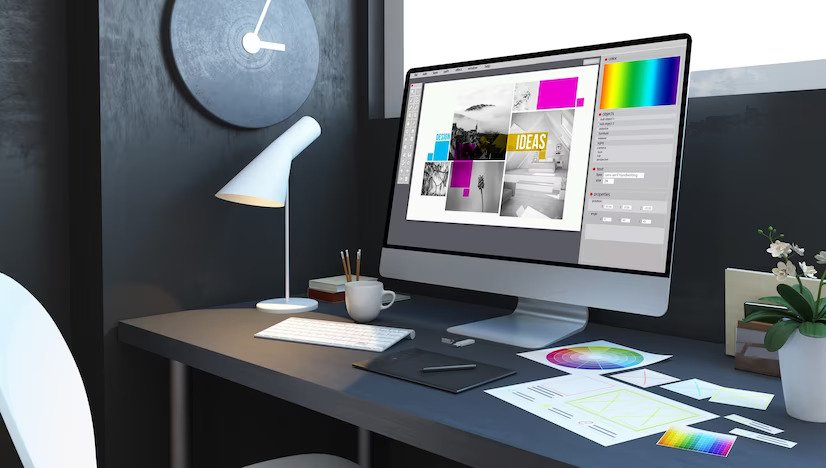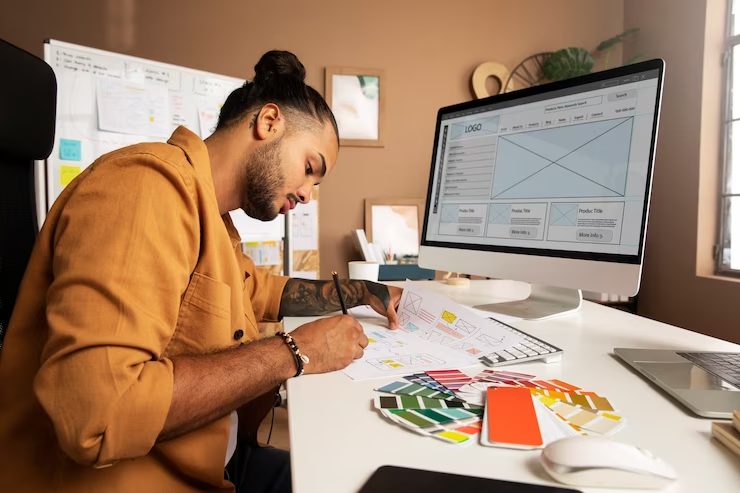Top 5 UX Design Trends That Will Take Over In 2023
17 March 2023
5 Mins Read

toc impalement
The world of UX design is constantly evolving, with new trends and technologies emerging every year.
As we approach 2023, it’s essential for UX designers and businesses to stay ahead of the curve to create engaging and innovative user experiences.
In this context, I will discuss the top 5 UX design trends likely to take over in 2023. These trends are based on the current market landscape, emerging technologies, and user behavior patterns.
By incorporating these trends into their design strategy, UX designers can create intuitive, user-friendly, and engaging experiences that meet the needs of modern-day users.
Why Are The Latest UX Design Trends Important?

Users expect a seamless and intuitive experience when using digital products and services. By staying up-to-date with the latest UX design trends, designers can create experiences that meet or exceed user expectations, increasing satisfaction, engagement, and loyalty.
With so many digital products and services available, businesses must stay ahead of the competition to succeed. By adopting the latest UX design trends, businesses can create innovative and engaging experiences that stand out in the market, attracting and retaining customers.
The latest UX design trends often incorporate emerging technologies such as artificial intelligence, voice interfaces, and augmented reality. By incorporating these technologies into their designs, designers can create experiences that leverage the latest innovations and provide new and exciting user interactions.
With an increasing focus on accessibility and inclusivity, designers must incorporate the latest trends and best practices to ensure their designs are accessible to all users, regardless of their abilities or disabilities.
By creating engaging and user-friendly experiences, businesses can increase customer satisfaction, retention, and loyalty. This can lead to increased revenue, profitability, and a positive brand reputation.
If you want your business to ride on the new trends and reach new heights, seek help from the ux design company.
Below are the trends that you need to keep your eye on.
1. Mixed Reality + Augmented Reality
Mixed reality (MR) and augmented reality (AR) are emerging UX trends expected to transform how we interact with digital products and services. Both technologies offer new and exciting ways to engage users, creating more immersive and interactive experiences.
MR and AR can be used in various ways to enhance the user experience. For example, in e-commerce, MR and AR can create virtual try-on experiences for clothing and accessories, allowing users to see how items would look on them in real time. In gaming, MR and AR can create more realistic and immersive game environments that combine physical and digital elements.
2. Immersive Scrolling
Immersive scrolling is a UX trend gaining popularity in recent years. It refers to using scrolling animations, parallax effects, and other visual techniques to create a more immersive and engaging user experience.
Immersive scrolling is often used to tell a story or to guide users through a digital product or service. For example, a website may use immersive scrolling to tell the story of a product or service, using scrolling animations and parallax effects to create a more engaging and interactive experience for the user.
Immersive scrolling can also create a sense of depth and dimensionality, making digital environments feel more like real-world spaces. This can be particularly effective in e-commerce, where immersive scrolling can create virtual storefronts or product displays that allow users to browse and interact with products more naturally and intuitively.
3. Motion Designs
Motion design is a UX trend that uses animated elements, transitions, and other visual effects to create a more engaging and intuitive user experience. Motion design is particularly effective in creating a sense of continuity and flow between different elements of a digital product or service, helping users to better understand how to interact with the interface.
One of the most common uses of motion design in UX is to provide feedback to users as they interact with digital products and services. For example, when a user clicks a button, motion design can provide visual feedback that the action has been recognized and is being processed.
Motion design can also create more engaging and immersive experiences for users. For example, in gaming, motion design can create more realistic and dynamic environments that respond to user actions and inputs.
4. 3D Imagery
3D imagery is a UX trend that uses three-dimensional visuals to create more immersive and engaging digital experiences. With the rise of augmented and virtual reality technologies, 3D imagery has become increasingly popular.
In UX design, 3D imagery can create more realistic and interactive environments for users to explore. For example, in e-commerce, 3D imagery can provide users with a more detailed and realistic view of products, allowing them to see the product from multiple angles and perspectives.
Another way that 3D imagery is being used in UX is to create more accessible and inclusive digital experiences. For example, 3D imagery can be used to create tactile and interactive experiences for users who may have visual or cognitive impairments.
5. Brutalism
Brutalism is a design trend that originated in the mid-20th century and has recently gained popularity in digital design, including UX design. It is characterized by a raw and unpolished aesthetic, often using rough textures, bold typography, and a monochromatic color palette.
As a UX trend, brutalism can create a unique and memorable digital experience for users. It is often associated with a sense of authenticity and honesty, which can help to build trust and credibility with users.
However, it is important to note that brutalism is unsuitable for all digital products and services. It is often used in niche industries such as music, fashion, and art, where it can help to create a distinctive brand identity and appeal to a specific target audience.
Breaking The Law With UX!
As technology continues to evolve at a rapid pace, the field of UX design is constantly changing and adapting to new trends and emerging technologies. In 2023, we can expect to see more focus on creating personalized, intuitive, and immersive digital experiences for users.
Voice-enabled UIs, AI and ML, advanced personalization, mixed reality, and immersive scrolling are just some of the trends expected to shape the future of UX design.
As UX designers continue to explore and experiment with these trends, we can look forward to more innovative and creative digital products and services that enhance the user experience and meet users’ needs in new and exciting ways.
Read Also:


















Comments Are Closed For This Article